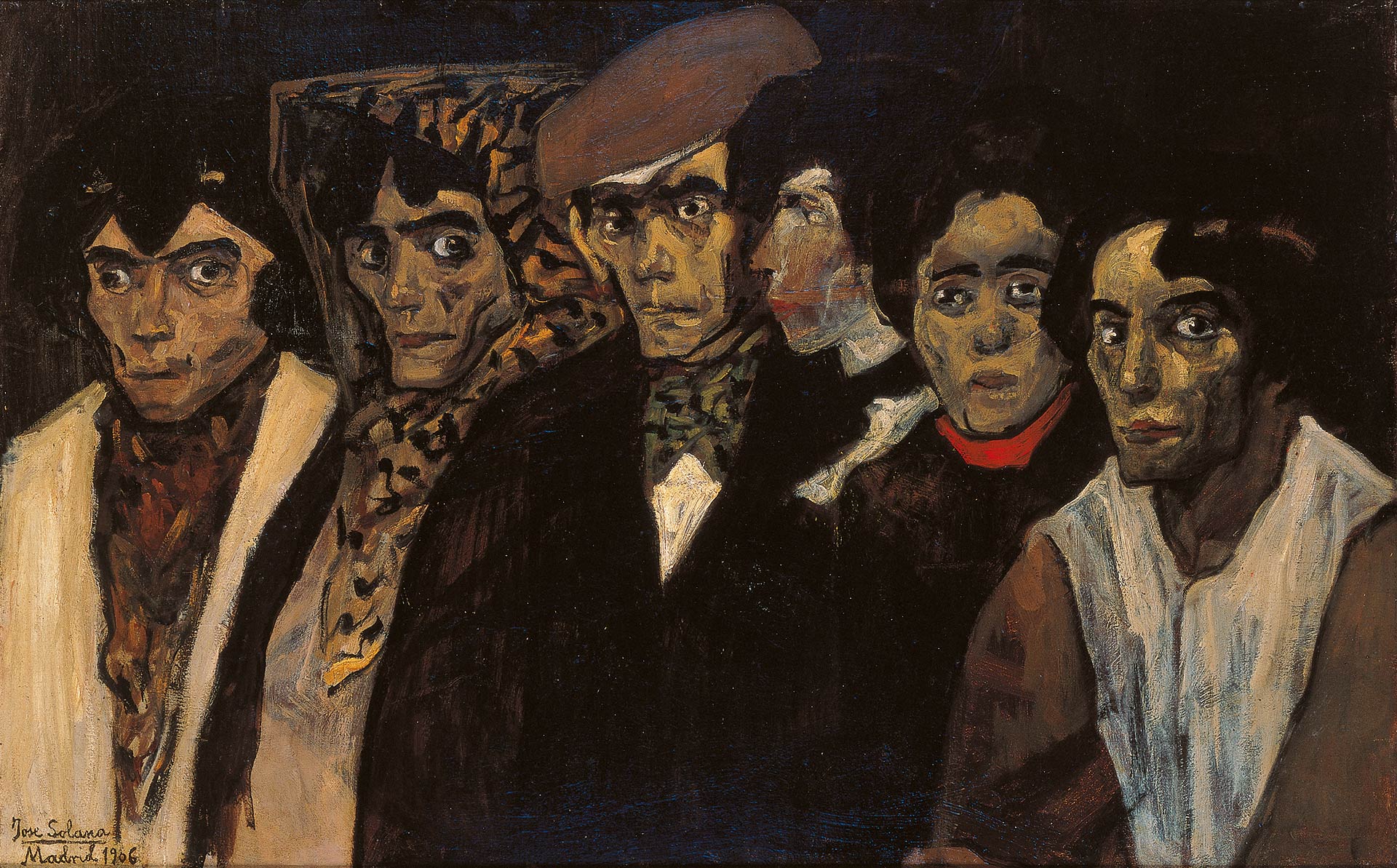
José Gutiérrez Solana (Madrid, 1886-1945)
Chulos and Chulas (Colourful Characters of Madrid)
1906
WORK INFORMATION
Oil on canvas, 61 × 97 cm
OTHER INFORMATION
Signed and dated in the lower left-hand corner: "Jose Solana / Madrid 1906"
One of the first known works by Solana dating from immediately after the completion of his artistic training is this Chulos and Chulas [terms that describe typically dressed, working-class young men and girls from Madrid], dating from 1906. It depicts the popular Madrid types that he would subsequently describe in his book of 1913 entitled Madrid, Scenes and Customs. In the artist’s words: “The only people dancing here are the prostitution lot, those who get women off the street, the pimps, those who play the barrel organ and don’t work because they are kept by their women; women who work in the Tobacco Factory, matchmakers, waistcoat makers and professional tarts; those who know how to live: some life!”
Simply by looking at this canvas, Solana’s pictorial origins are evident: technically close to Goya, he applies the layers of pigment in superimposed, transparent layers without any concession to line. The images appear without defined outlines, intermixed with each other and occupying the entire pictorial space, which is constructed using a frontal perspective that emphasises the spirit of the group over the individual and hence indicates the social class to which these figures belong.
The use of a muted palette imbues the painting with a slightly gloomy air.
Solana had a high opinion of this work and kept it throughout his lifetime. It was found in his collection after his death. It was included during his lifetime in various exhibitions including the Salón de los Artistas Ibéricos in 1925, the event that marked the start of the avant-garde in Spain, and was subsequently shown in the Spanish Pavilion at the Venice Biennial in 1932.
María José Salazar

